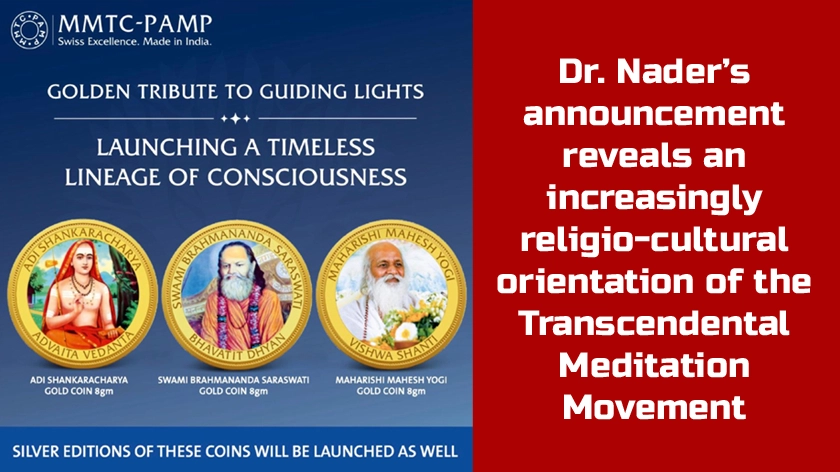Dr. Tony Nader, also known as Maharaja Adhiraj Rajaraam, recently made a public announcement on his social media regarding the release of a new commemorative coin series honoring three major figures in the lineage of Vedic knowledge: Adi Shankara, Swami Brahmananda Saraswati (Guru Dev), and Maharishi Mahesh Yogi. This announcement was notably timed to coincide with Ram Navami, a major Hindu religious festival celebrating the birth of Lord Rama.
The introduction of these coins follows the earlier launch of the Raam currency, which was positioned as a spiritual-economic initiative within the global Transcendental Meditation (TM) movement. Now, with the expansion into gold and silver coins, a further symbolic and material connection is being made between spiritual heritage and material expression.
While the initiative is framed as a celebration of “Vedic Knowledge” and its role in reducing human suffering, there are some notable contradictions within the message—especially in the context of how the Transcendental Meditation organization has historically portrayed itself.
Secularism vs. Religious Symbolism
One of the core principles repeatedly emphasized by TM advocates is that Transcendental Meditation is not a religion, nor is it tied to any belief system or religious tradition. This assertion has been crucial in positioning TM as a scientific and secular technique for stress reduction, mental clarity, and overall well-being—especially when promoting the practice in Western schools, governments, and health institutions.
However, the current announcement, prominently aligned with Ram Navami, and honoring explicitly Hindu religious and spiritual figures, appears to contradict this foundational narrative. Ram Navami is not a secular observance; it is deeply embedded in Hindu religious tradition. By tying the coin release to this festival and invoking divine lineages and Vedic masters, the message blends religious reverence with organizational branding.
Spiritual Authority and Branding
The figures chosen—Adi Shankara (a central theologian of Advaita Vedanta), Swami Brahmananda Saraswati (the Shankaracharya of Jyotir Math), and Maharishi Mahesh Yogi (founder of the TM movement)—form a spiritual hierarchy that TM has long claimed as its doctrinal foundation. While these figures indeed represent pillars of Indian philosophical tradition, their veneration in this way leans heavily toward religious glorification, rather than purely educational or philosophical recognition.
Furthermore, by presenting the coins as items for purchase—albeit with proceeds going toward spreading Maharishi’s knowledge—the organization steps into a quasi-commercial zone, where spiritual legitimacy and symbolic capital are being monetized. This raises ethical and philosophical questions about commodification of spiritual heritage.
Conclusion
Dr. Nader’s announcement reveals an increasingly religio-cultural orientation of the Transcendental Meditation movement, in contrast to its historically secular and scientific positioning. The use of Hindu religious holidays, religious iconography, and sacred figures alongside commercial initiatives like gold and silver coins blurs the lines between spiritual celebration, religious affiliation, and financial enterprise.
This development may attract criticism from those who once viewed TM as a universal, non-religious practice, and raises concerns about the organization’s true ideological alignment. For those within or observing the TM movement, this latest initiative serves as a revealing moment of identity clarification—either consciously or unconsciously declaring a return to its Hindu-Vedic roots, despite long-standing denials of religious affiliation.


